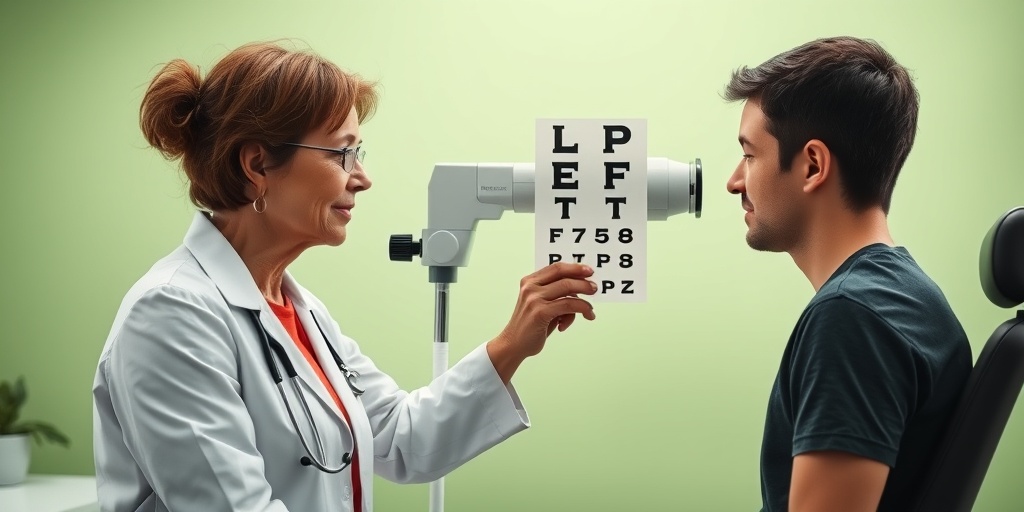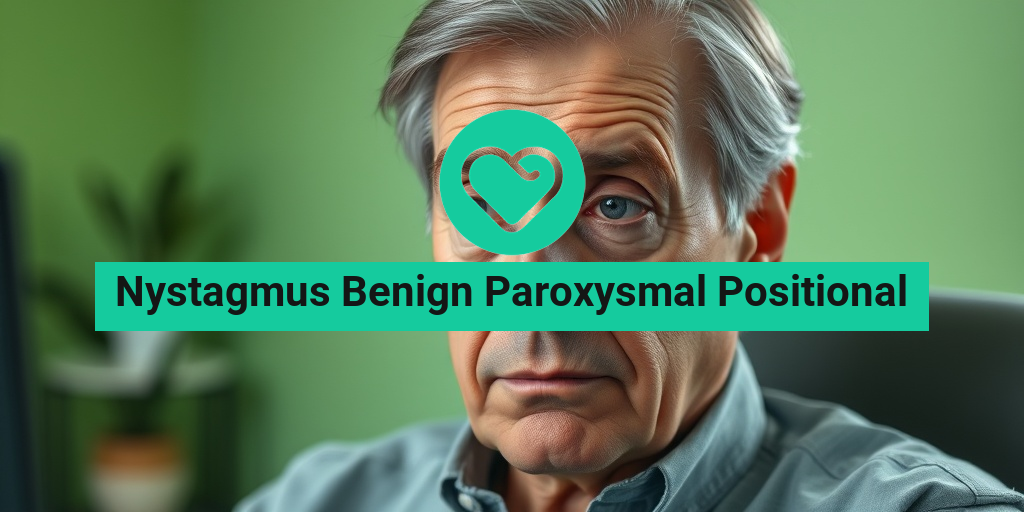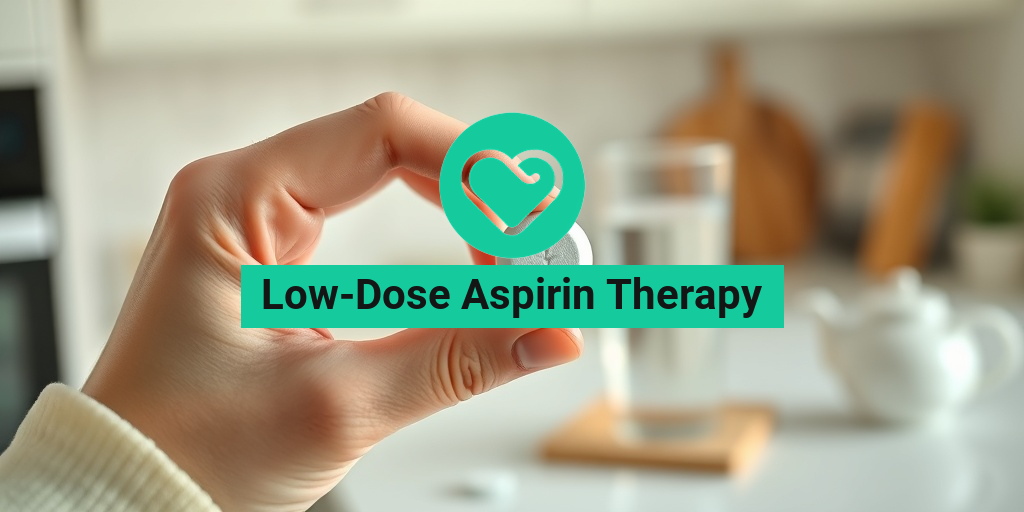What Is Nystagmus?
Nystagmus is a condition characterized by involuntary eye movements, which can lead to a range of visual disturbances. These movements can be horizontal, vertical, or rotary, and they often occur in a rhythmic pattern. While nystagmus can be a standalone condition, it is frequently associated with other medical issues, including benign paroxysmal positional vertigo (BPPV).
One specific type of nystagmus that often arises in conjunction with BPPV is known as benign paroxysmal positional nystagmus (BPPN). This condition occurs when tiny calcium crystals in the inner ear become dislodged and move into the semicircular canals, leading to episodes of vertigo and abnormal eye movements. Understanding nystagmus is crucial for diagnosing and managing related conditions effectively.
Types of Nystagmus
Nystagmus can be classified into several types based on its cause and characteristics:
- Congenital Nystagmus: Present at birth or develops in early childhood, often associated with other visual impairments.
- Acquired Nystagmus: Develops later in life due to various factors, including neurological disorders, medications, or inner ear issues.
- Positional Nystagmus: Triggered by changes in head position, commonly seen in BPPV.
Understanding the type of nystagmus is essential for determining the appropriate treatment and management strategies. If you suspect you or someone you know may be experiencing nystagmus, consulting a healthcare professional is vital for accurate diagnosis and care.
Nystagmus Symptoms
The symptoms of nystagmus can vary widely depending on the underlying cause and the type of eye movements involved. Here are some common symptoms associated with nystagmus:
Visual Disturbances
Individuals with nystagmus often report experiencing visual disturbances, which may include:
- Blurred Vision: The involuntary eye movements can make it difficult to focus on objects, leading to blurred vision.
- Difficulty Tracking Moving Objects: People with nystagmus may struggle to follow moving objects smoothly.
- Oscillopsia: This is the sensation that stationary objects are moving, which can be disorienting.
Balance Issues
Nystagmus can also affect balance and coordination. This is particularly true for those with benign paroxysmal positional vertigo, where changes in head position can trigger episodes of vertigo. Symptoms may include:
- Dizziness: A spinning sensation that can occur when changing positions.
- Unsteadiness: Difficulty maintaining balance, especially when walking or standing.
Other Associated Symptoms
In addition to visual and balance-related symptoms, individuals may experience:
- Nausea: Often accompanying dizziness, nausea can be a significant concern for those with nystagmus.
- Fatigue: The constant effort to stabilize vision can lead to fatigue and discomfort.
It’s important to note that not everyone with nystagmus will experience all of these symptoms. The severity and frequency of symptoms can vary widely among individuals. If you notice any of these symptoms, especially in conjunction with changes in head position, it may be time to consult a healthcare provider for further evaluation.
For more information on nystagmus and related conditions, consider visiting Yesil Health AI, a valuable resource for evidence-based health answers. Understanding your symptoms and seeking appropriate care can significantly improve your quality of life. 🌟

Nystagmus Causes
Nystagmus is a condition characterized by involuntary eye movements, which can lead to difficulties with vision and balance. Understanding the causes of nystagmus benign paroxysmal positional is crucial for effective management and treatment. Here, we explore the various factors that can contribute to this condition.
1. Inner Ear Disorders
One of the most common causes of nystagmus is related to inner ear disorders. The inner ear plays a vital role in maintaining balance and spatial orientation. Conditions such as benign paroxysmal positional vertigo (BPPV) can trigger episodes of nystagmus. In BPPV, tiny calcium crystals in the inner ear become dislodged, leading to vertigo and abnormal eye movements.
2. Neurological Conditions
Neurological disorders can also lead to nystagmus. Conditions such as multiple sclerosis, stroke, or traumatic brain injury can affect the areas of the brain responsible for eye movement control. These conditions may result in persistent or intermittent nystagmus, impacting a person’s ability to focus and maintain balance.
3. Medications and Substance Use
Certain medications and substances can induce nystagmus as a side effect. For instance, sedatives, anti-seizure medications, and alcohol can affect the central nervous system, leading to involuntary eye movements. If you suspect that your medication may be causing nystagmus, consult your healthcare provider for alternatives.
4. Genetic Factors
In some cases, nystagmus can be hereditary. Genetic mutations can affect the development of the visual system, leading to conditions such as benign paroxysmal positional nystagmus. If you have a family history of nystagmus or related eye disorders, it may be beneficial to discuss this with your doctor.
5. Other Medical Conditions
Various medical conditions can also contribute to the development of nystagmus. These include:
- Congenital Nystagmus: Present at birth, often associated with other visual impairments.
- Vestibular Disorders: Conditions affecting the vestibular system can lead to balance issues and nystagmus.
- Infections: Certain infections, such as meningitis, can affect the brain and lead to nystagmus.
Understanding the underlying causes of nystagmus is essential for effective treatment and management. If you or someone you know is experiencing symptoms of nystagmus, it is important to seek medical advice for a proper diagnosis and tailored treatment plan. 🩺
Nystagmus Diagnosis
Diagnosing nystagmus involves a comprehensive evaluation by a healthcare professional, typically an eye specialist or neurologist. The diagnosis process is crucial for determining the underlying cause and appropriate treatment options. Here’s what you can expect during the diagnosis of nystagmus benign paroxysmal positional.
1. Medical History Review
The first step in diagnosing nystagmus is a thorough review of your medical history. Your doctor will ask about:
- Any symptoms you are experiencing, such as dizziness or balance issues.
- Your family history of eye disorders or neurological conditions.
- Any medications you are currently taking or have recently taken.
2. Physical Examination
A physical examination will follow the medical history review. This may include:
- Assessing your eye movements and coordination.
- Checking for signs of vertigo or balance issues.
- Evaluating your vision and eye alignment.
3. Specialized Tests
Depending on the findings from the initial examination, your doctor may recommend specialized tests to further evaluate your condition. These tests can include:
- Electronystagmography (ENG): Measures eye movements to assess the vestibular system.
- Videonystagmography (VNG): Similar to ENG but uses video to record eye movements.
- Magnetic Resonance Imaging (MRI): Helps identify any structural abnormalities in the brain or inner ear.
4. Differential Diagnosis
It’s important to differentiate nystagmus from other conditions that may cause similar symptoms. Your doctor will consider various factors to rule out other potential causes of your symptoms, such as:
- Other types of vertigo.
- Vision problems unrelated to nystagmus.
- Neurological disorders that may mimic nystagmus.
Once a diagnosis is made, your healthcare provider will discuss the findings with you and recommend a treatment plan tailored to your specific needs. Early diagnosis and intervention can significantly improve outcomes for individuals with nystagmus. 🌟

Nystagmus Treatment Options
Nystagmus, particularly benign paroxysmal positional nystagmus (BPPN), can be a challenging condition to manage. It involves involuntary eye movements that can lead to dizziness and balance issues. Fortunately, there are several treatment options available that can help alleviate symptoms and improve quality of life.
Medical Treatments
When it comes to treating nystagmus, medical interventions can vary based on the underlying cause and severity of the condition. Here are some common medical treatments:
- Vestibular Rehabilitation Therapy (VRT): This specialized form of physical therapy focuses on improving balance and reducing dizziness through exercises that help the brain adapt to the abnormal eye movements.
- Medications: Certain medications, such as antihistamines or anti-anxiety drugs, may be prescribed to help manage symptoms. However, these are typically used for short-term relief.
- Surgery: In severe cases, surgical options may be considered. Procedures like the posterior canal occlusion can help reduce the frequency and intensity of nystagmus episodes.
Alternative Therapies
In addition to conventional treatments, some individuals find relief through alternative therapies. These may include:
- Acupuncture: This ancient practice may help alleviate symptoms by promoting relaxation and improving overall well-being.
- Chiropractic Care: Some patients report improvements in their symptoms through spinal adjustments and other chiropractic techniques.
Understanding the Role of Lifestyle Changes
Making certain lifestyle adjustments can also play a significant role in managing nystagmus. Here are some tips:
- Avoiding Triggers: Identifying and avoiding specific triggers, such as certain head positions or rapid movements, can help reduce episodes.
- Staying Hydrated: Dehydration can exacerbate symptoms, so it’s essential to drink plenty of fluids.
- Stress Management: Techniques such as yoga, meditation, and deep breathing can help manage stress, which may worsen symptoms.
Nystagmus Home Remedies
For those seeking natural ways to manage benign paroxysmal positional nystagmus, several home remedies can complement medical treatments. While these remedies may not cure the condition, they can help alleviate symptoms and improve overall comfort.
Dietary Adjustments
What you eat can significantly impact your symptoms. Consider incorporating the following dietary changes:
- Anti-inflammatory Foods: Foods rich in omega-3 fatty acids, such as salmon, walnuts, and flaxseeds, can help reduce inflammation.
- Limit Caffeine and Alcohol: Both substances can exacerbate dizziness and should be consumed in moderation or avoided altogether.
Herbal Remedies
Some herbs are believed to have calming effects that may help with nystagmus symptoms:
- Ginger: Known for its anti-nausea properties, ginger can be consumed as tea or in supplement form.
- Ginkgo Biloba: This herb is thought to improve circulation and may help with balance issues.
Eye Exercises
Engaging in specific eye exercises can help strengthen eye muscles and improve coordination. Here are a couple of exercises to try:
- Focus Shifting: Hold a pen at arm’s length and focus on it as you slowly bring it closer to your nose, then move it back out. Repeat several times.
- Tracking Exercises: Move your eyes in a circular motion, first clockwise and then counterclockwise, to improve muscle control.
Creating a Calm Environment
Reducing environmental stressors can also help manage symptoms. Consider these tips:
- Dim Lighting: Bright lights can trigger symptoms, so opt for softer lighting in your home.
- Minimize Screen Time: Excessive screen time can lead to eye strain and worsen symptoms. Take regular breaks when using digital devices.
By exploring these treatment options and home remedies, individuals with benign paroxysmal positional nystagmus can find effective ways to manage their symptoms and enhance their quality of life. Remember to consult with a healthcare professional before starting any new treatment or remedy to ensure it’s appropriate for your specific situation. 🌟

Nystagmus and Balance Issues
Nystagmus is a condition characterized by involuntary eye movements, which can significantly impact a person’s balance and coordination. Understanding the relationship between nystagmus benign paroxysmal positional and balance issues is crucial for those affected by this condition.
What is Nystagmus?
Nystagmus can manifest in various forms, but it generally involves rapid, uncontrolled movements of the eyes. These movements can be horizontal, vertical, or rotary, and they may occur in one or both eyes. The condition can be congenital (present at birth) or acquired later in life due to various factors, including inner ear disorders, neurological conditions, or even certain medications.
How Nystagmus Affects Balance
The eyes play a vital role in maintaining balance by providing the brain with visual information about the body’s position in space. When nystagmus occurs, the constant movement of the eyes can disrupt this visual input, leading to balance issues. Here are some ways in which nystagmus can affect balance:
- Visual Disorientation: The rapid eye movements can make it difficult for individuals to focus on objects, leading to a sense of disorientation.
- Vestibular Dysfunction: Nystagmus is often associated with vestibular disorders, which can further impair balance and spatial awareness.
- Increased Fall Risk: Due to impaired balance, individuals with nystagmus may be at a higher risk of falls, especially in unfamiliar environments.
Symptoms of Balance Issues Related to Nystagmus
Individuals experiencing balance issues due to nystagmus may report a variety of symptoms, including:
- Dizziness or vertigo
- Unsteadiness while walking or standing
- Difficulty focusing on moving objects
- Feeling of spinning or swaying
If you or someone you know is experiencing these symptoms, it is essential to consult a healthcare professional for a thorough evaluation and appropriate management strategies.
Nystagmus Prognosis and Outlook
The prognosis for individuals with nystagmus can vary widely depending on the underlying cause and the type of nystagmus present. Understanding the potential outcomes can help individuals and their families prepare for the future.
Factors Influencing Prognosis
Several factors can influence the prognosis of nystagmus, including:
- Type of Nystagmus: Congenital nystagmus may stabilize over time, while acquired nystagmus may indicate an underlying condition that requires treatment.
- Underlying Causes: If nystagmus is secondary to a treatable condition (like an inner ear disorder), addressing that condition may improve symptoms.
- Age of Onset: Early diagnosis and intervention can lead to better outcomes, especially in children.
Living with Nystagmus
For many individuals, living with nystagmus involves adapting to the condition and finding effective coping strategies. Here are some tips for managing nystagmus:
- Regular Eye Exams: Routine check-ups with an eye care professional can help monitor the condition and adjust treatment as necessary.
- Vestibular Rehabilitation: Physical therapy focused on balance and coordination can be beneficial for those experiencing significant balance issues.
- Support Groups: Connecting with others who have nystagmus can provide emotional support and practical advice.
Outlook for Individuals with Nystagmus
The outlook for individuals with nystagmus varies. While some may experience significant challenges, others may find that their symptoms stabilize or improve with treatment. It’s essential to maintain open communication with healthcare providers to ensure the best possible management of the condition.
In conclusion, understanding the relationship between nystagmus benign paroxysmal positional and balance issues is crucial for effective management. With the right support and strategies, individuals can lead fulfilling lives despite the challenges posed by nystagmus. 🌟

Frequently Asked Questions about Nystagmus Benign Paroxysmal Positional
What is Nystagmus Benign Paroxysmal Positional?
Nystagmus Benign Paroxysmal Positional refers to a specific type of eye movement disorder that occurs in conjunction with benign paroxysmal positional vertigo (BPPV). It is characterized by involuntary eye movements that can be triggered by changes in head position.
What are the symptoms of Nystagmus Benign Paroxysmal Positional?
Common symptoms include:
- Involuntary eye movements
- Dizziness or vertigo when changing head positions
- Balance issues
- Nausea
How is Nystagmus Benign Paroxysmal Positional diagnosed?
Diagnosis typically involves a physical examination, a review of medical history, and specific tests to observe eye movements and assess balance. A healthcare provider may also perform positional tests to trigger symptoms.
What causes Nystagmus Benign Paroxysmal Positional?
The condition is often caused by dislodged calcium carbonate crystals in the inner ear, which can disrupt normal balance and lead to the characteristic symptoms of vertigo and eye movement.
Is Nystagmus Benign Paroxysmal Positional hereditary?
While the exact cause of benign paroxysmal positional vertigo is not fully understood, there is no strong evidence to suggest that it is hereditary. However, some individuals may have a predisposition due to other health conditions.
How common is Nystagmus Benign Paroxysmal Positional?
This condition is relatively common, especially among older adults. It can occur in individuals of any age but is most frequently seen in those over 60 years old.
Can Nystagmus Benign Paroxysmal Positional occur without vertigo?
Yes, it is possible to experience benign paroxysmal positional vertigo without the typical symptoms of vertigo. Some individuals may only notice the eye movements without significant dizziness.
What treatments are available for Nystagmus Benign Paroxysmal Positional?
Treatment options may include:
- Vestibular rehabilitation therapy
- Canalith repositioning maneuvers
- Medications to manage symptoms
When should I see a doctor about Nystagmus Benign Paroxysmal Positional?
If you experience persistent dizziness, balance issues, or unusual eye movements, it is important to consult a healthcare professional for a thorough evaluation and appropriate management.




